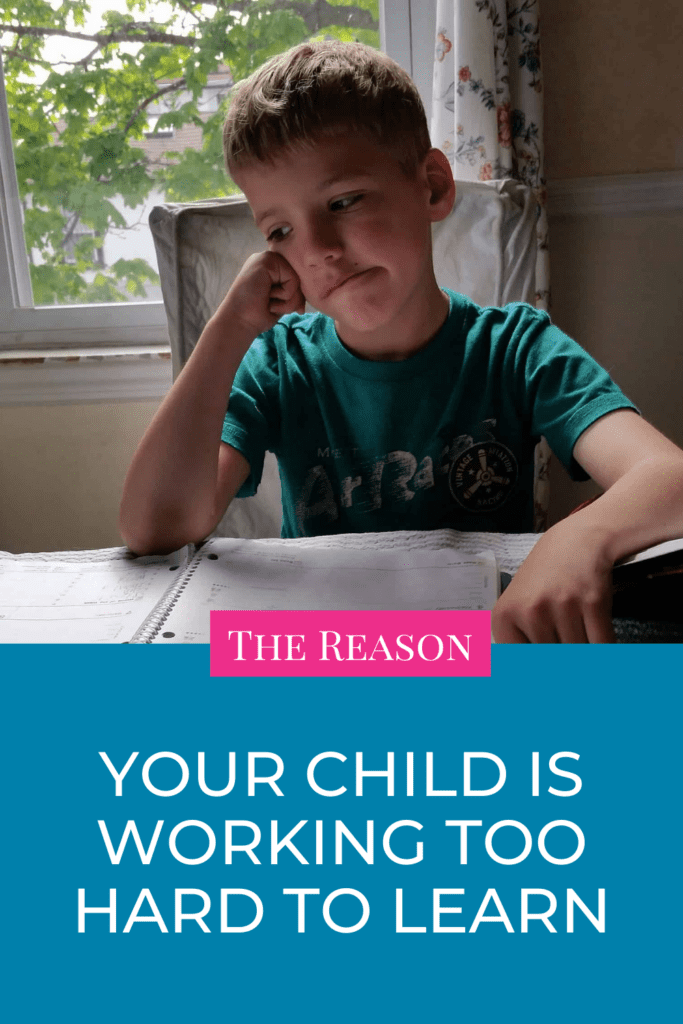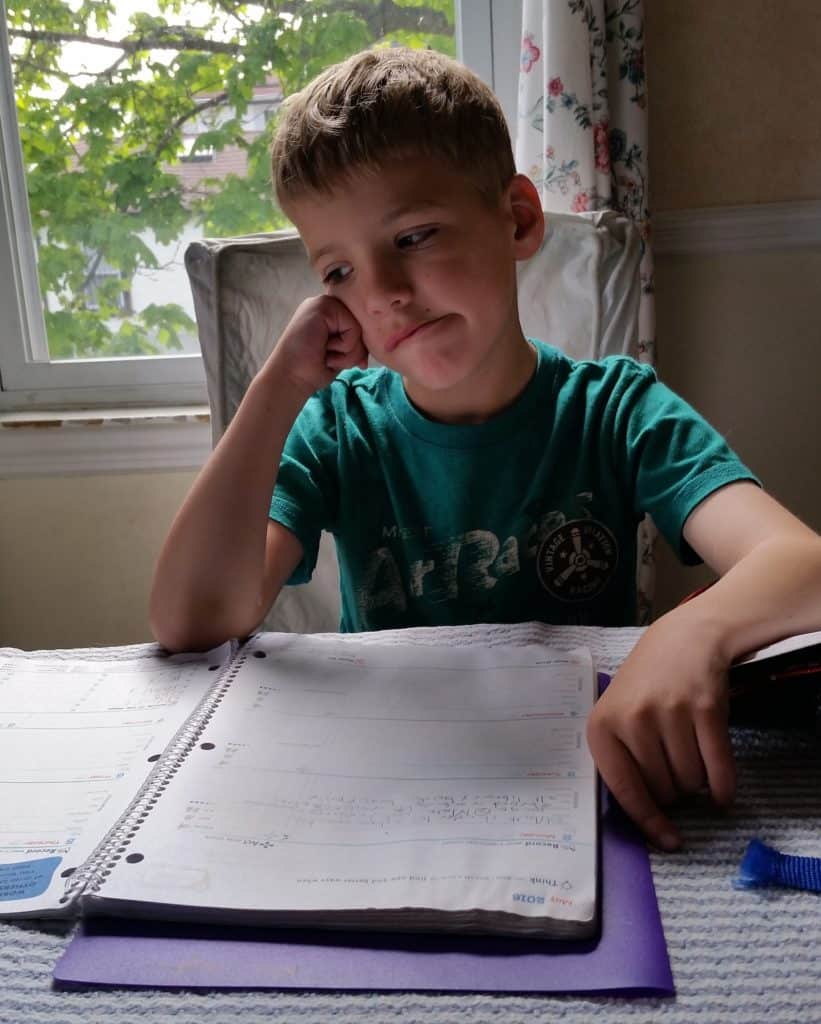“No matter how many times I teach it or how hard he tries – it just doesn’t seem to sink in.”
That’s what a mom told me a few weeks ago. That’s the kind of thing moms tell me all the time. It can be frustrating to downright heartbreaking to watch.
Kids often feel useless and broken and nothing could be further from the truth.
How Left & Right Brain Imbalance Can Compromise Learning
In my last article, I talked about the functions of the left and right brain hemispheres and how the corpus callosum helps to manage your child’s emotions. Effective and efficient transfer of signals between brain hemispheres is critical for effective learning and reading.
This same process occurs when your child is learning whether at home or in the classroom.
But first let’s go through how the brain uses both sides of the brain to learn.
1.The left brain learns by repetitively receiving information which it then transfers that information to the right brain.
2.the right brain stores that information in the long term memory.
Each side needs to work together.
Right Side of Brain:
- Visual Processing
- Long Term Memory
Left Side of the Brain:
- Auditory Learning
- Short Term Memory
Learning language, reading and so much more requires both sides of the brain to work together and each side plays a specific role in both speaking and reading.
Right Side of the Brain:
- Non-verbal, body language
- Detects emotional aspects of language
- Processes meaning of words
- Expression
Left Side of the Brain:
- Decoding sounds
- Uses and understands tone
- Timing of letters
How Weak Memory Ties Into This
Children who struggle with learning have difficulty transferring information from the left to the right of their brain. This results in information being stored in their short-term memory on the left side rather than their right side in their long-term memory.
If your child struggles because a they have to repeatedly learn the same information, yet that information never really seems to store or retain it – this could be the problem.
Why This Happens – The Bridge and the Filter is Broken
This disconnection can occur because a child’s corpus callosum is not thick and is therefore acting as a barrier rather than a bridge.
In my last article, I wrote about the filter that helps to balance the brain hemispheres’ roles. When there is no filter, learning language can be challenging.
For some children, spoken language or expressing their ideas can be a challenge. For others difficulty with reading and writing occur when it comes time to learn letters, track letters on the page, blend sounds or even express ideas on paper through writing.
The Left Brain Doesn’t Know What the Right Brain Is Doing
When the filter is not working, your child’s brain is disorganized. You’ve heard the saying “The left hand doesn’t know what the right hand is doing.” This is essentially what is taking place in the brain.
While the language centre is concentrated in the left side of the brain, reading is a two-hemisphere process.
Reading – It’s a Left Brain, Right Brain Job
When reading, the left, auditory hemisphere is required to blend letter sounds and words and analyze thoughts while the right, visual processing centre is needed to recognize those symbols accurately, visualize the story and retain sight words.
Dyslexia – A Left Brained Deficit
Dyslexia, defined as a phonological deficit (frequently auditory too) is a case of right brained dominance. These kids often excel at visual-spatial skills, creativity, and can be deeply emotional and sensitive. The left side of the brain where the auditory processing centre is located, also happens to be the area that is needed for sequencing and timing; these skills are essential for reading.
Dyslexics have difficulties with effectively processing and blending sounds because they tend to be right brained dominant, while the language centre tends to be more concentrated on the left side of the brain.
The right brain is the first side of the brain to develop. When there is interference or factors that inhibit brain development both the corpus callosum and the left side of the brain can be affected.
“But My Child is an Auditory Learner – He is Left Brained”
Many parents will say their child is an auditory learner because they understand stories best when it is read aloud. However, in order to understand a story that is read aloud, the visual processing centre is activated to create a picture in the mind of what is taking place.
Letter Reversals & Visual Processing Disorder
Children with reading disorders related to visual processing do not necessarily have a weak right brain and dominant left brain (though this can happen). Letter and number reversals, poor visual-motor control and even issues with focus or attention are frequently indicative of poor connectivity and development of the corpus callosum.
When this ‘bridge’ is working effectively it manages and directs specific eye movements necessary for reading: eye-tracking, eye-teaming, saccadic eye-movements as well as processing visual stimuli. When there are problems with the corpus callosum obvious breakdowns will occur in this area.
The Importance of Crawling
I’ve said it before and I’ll say it again, crawling is the prime way that this corpus callosum thickens and ensures it acts as both a bridge for information transfer as well as a filter to allow for balance between the two brain hemispheres.
Crossing the midline through cross over exercises is the key to building this bridge which essentially paves the way for fine and gross motor skills, attention, optimal visual and auditory processing as well as cognition.
Learning gaps, delays or even learning disabilities occur when signals are not effectively or efficiently transmitted across this bridge or band of neural networks. This means your child is working too hard to learn.
Brain Integration Therapy
This is where brain integration therapy can be so helpful. When a child does certain exercises and movements that strengthens the corpus callosum and thus connectivity between the two brain hemispheres, learning and self-regulation is no longer an uphill battle. Brain integration therapy is a series of exercises that simulates the early motor movements that develop the brain and promote healthy brain organization.
Easy exercises that you can do at home to get started on strengthening your child’s corpus callosum are crossover exercises in which your child crosses the midline. Repetitive movements like touching the left hand to the right knee, then the right hand to the left knee are examples of crossover exercises. Done consistently over the course of several months these exercises can yield improvements in your child’s cognition and behaviour.
To learn more about how you can help your child rise above learning and behaviour difficulties, schedule a free twenty-minute consult so I can help you identify the main reasons why your child is struggling with learning, reading and behaviour.


